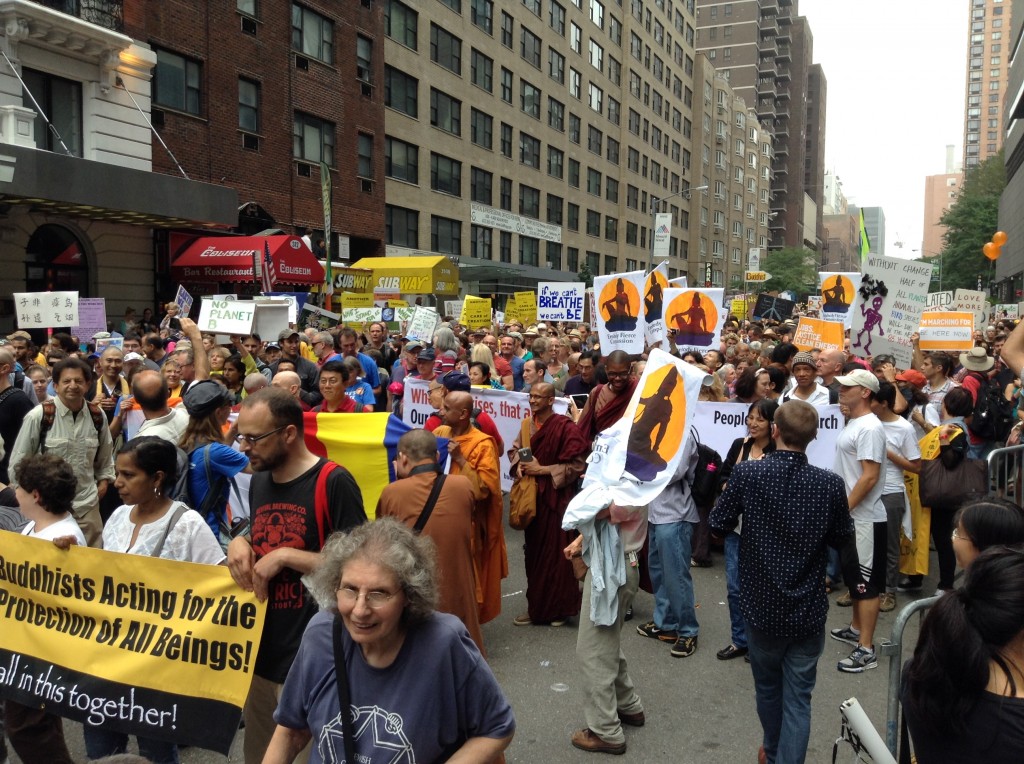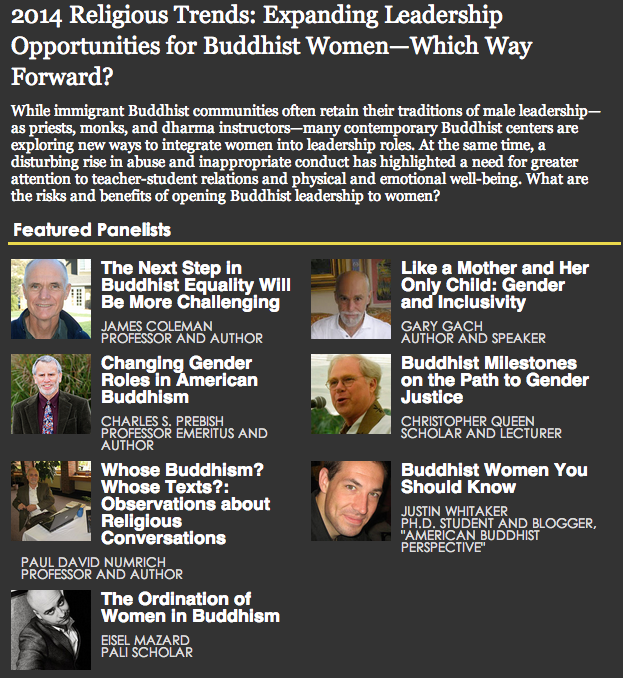 William Whittington is the Assistant Chair of Critical Studies in the School of Cinematic Arts at the University of Southern California, where he teaches courses in film and television history, genre, audio and digital culture, film and Buddhism, adaptation, and contemporary LGBT media. He is also the author of Sound Design and Science Fiction (University of Texas Press, 2007). Between 1993-1997, he served as the curator of the USC Warner Bros. Archives, assisting with research on various films, documentaries, music scores and books. His scholarly work includes articles and interviews on genre, audio and digital culture, and media technology, and he is currently writing a new book entitled, Sound Design and Horror (forthcoming).
William Whittington is the Assistant Chair of Critical Studies in the School of Cinematic Arts at the University of Southern California, where he teaches courses in film and television history, genre, audio and digital culture, film and Buddhism, adaptation, and contemporary LGBT media. He is also the author of Sound Design and Science Fiction (University of Texas Press, 2007). Between 1993-1997, he served as the curator of the USC Warner Bros. Archives, assisting with research on various films, documentaries, music scores and books. His scholarly work includes articles and interviews on genre, audio and digital culture, and media technology, and he is currently writing a new book entitled, Sound Design and Horror (forthcoming).
Vicki Callahan is an associate professor of Cinema Practice at the University of Southern California’s Institute for Multimedia Literacy (IML) in the School of Cinematic Arts. She is the author of Zones of Anxiety: Movement, Musidora, and the Crime Serials of Louis Feuillade (Wayne State University Press, 2004) and the editor for the collection, Reclaiming the Archive: Feminism and Film History (Wayne State University Press 2010). Currently she is working on a monograph on the silent film actress and director, Mabel Normand. Vicki is the author/organizer of the Feminism 3.0 website. Her interests in silent cinema, feminist theory, and digital media intersect around questions of emergent/disruptive technologies, new modes of writing, social justice, and alternative or counter narrative forms. Her website is www.vickicallahan.com.
I met Vicki (who has become a good friend) and William four years ago, during an event at Hsi Lai Temple. As scholars of film interested in Buddhism (rather than the other way around), I was particularly interested to pick their brains about a few things — social justice included. They graciously agreed, and what follows is a discussion we had via email. On behalf of readers, thank you, Vicki and William!
*
There’s been a tremendous lot of conversation in popular, professional, and other circles about Buddhism and film. For you two as film professionals with an interest in Buddhism, why is this a fruitful, interesting, and worthwhile topic to explore?
WILLIAM WHITTINGTON: One of my teaching approaches in Critical Studies at the University of Southern California is to mix theory and practice, and also to foster of collision of unrelated areas of study. I first became interested in Buddhism out of an intellectual curiosity to bring non-western philosophy to critical thinking about film and media into my classes. The more I read about Buddhism, the more I realized that the pedagogical approaches for Buddhism and Critical Theory were very similar. Buddhism consistently asks us to be critical of all its teachings, just as the field of critical theory does. Only in this way can we foster a kind of dialogue with the texts and find new understandings that resonate within us. From this point, I started to explore the connections of Buddhism to characterizations and storytelling within film. Buddhism is a tradition that is so adaptable in terms of its transmission that it is no surprise that it has found its way into film, television and new media. When I start to trace Buddhism through media from very early sculptures through painting and then into film, television and new media, my students begin to see Buddhist influences everywhere they look in popular culture. With a greater understanding of the context of Buddhist philosophy, the iconography becomes much richer and more meaningful.
VICKI CALLAHAN: I approach this a little bit different, although related way, in terms of my connections of Buddhism and film. I have always been interested both in what sort of knowledge the arts in general can provide us, and then the unique contributions of cinema to how and what we know. I was particularly interested in the idea of non-differentiation and how cinema as a “way of seeing” might facilitate — or indeed might prevent — that practice. For me it all sort of goes back to montage, the distinct ability to see multiple points of view. It is something that parallel aesthetic traditions to cinema’s emergence at turn of 20th century — like obviously Cubism — also interrogated, but film offered an especially robust opportunity. This does overlap with what William notes regarding his interest being triggered by theory/practice intersections. This is something most educational paradigms have yet to embrace — knowledge is still quite compartmentalized, disciplinary bounded and connections between reason and the somatic are not always made. There is some really interesting work now in the digital arts/humanities trying to bridge those divides and to think quite rigorously about what can be gained by the convergence of still and moving images, sound, and text — it is something that cinema asked — or as Godard has said “promised” but the digital might now provide. That is, new ways of “writing,” “thinking” and even being I would argue.
The three of us met a few years ago at Hsi Lai Temple, where we were presenting on pop culture and Buddhism – I spoke about comic books, and you two about film. For me, the most delightful and memorable part of your presentation was the part about Pixar. Would you say a little bit about Buddhism and the Pixar films and shorts?
WILLIAM WHITTINGTON: Our talks at Hsi Lai Temple bring up such fond memories because we were presenting mostly to young people. They were so excited to see how Buddhism connected to their lives and how it could affect change in themselves and society. For many of them, however, they have been brought into the tradition by their parents, and therefore, they often see it as somewhat old fashion. We connected it to Pixar films in order to cause them to question that belief and realize that Buddhism has a place in this cutting edge form of 3D computer animation. The themes of Buddhism such as interconnection, compassion and ego/non-ego are played out in the short films like “For the Birds.” In the film, a flock of tiny birds attempts to keep an outsider from joining their conversation of chirping. Initially, they fall into a kind of mob mentality, attempting to peck the new comer from their midst. When he falls to ground below, the mob of birds that remain are flung up into the air, and the velocity of wire snapping back causes them to lose all of their feathers. When they land naked on the ground, all they can do is hide their shame and bruised egos. It is a wonderful allegory. It is like a Buddhist lesson rendered with the newest technologies of animation and surround sound. I think the young audience at the Temple connected with it because they saw the truth in it.
Vicki, you do a lot of work around film and feminist theory and social justice questions. Would you say something about where Buddhism fits in all this and how it plays a role in the work you do?
VICKI CALLAHAN: Well, again, it comes back to this question of what John Berger calls, “Ways of Seeing” or more recently Ron Burnett has termed “vantage points.” I have been very influenced by Trinh T. Minh ha’s writings and films especially and her attention to what she calls the “empty subject” position. She’s addressing how we might write history, how we might document different spaces, places, and people, without a singular determined point of view. Rather her films (and writings) try to construct a place where multiple points of view might intersect. Her films approach this through a variety of narrative and editing strategies, but it is something that I find myself really trying to encourage through a variety of teaching and writing strategies. And I look for places in even the most mainstream film where we might see this — places where we see examples of “extended being” or moments of non-ego as William described. Animation examples as he noted above are perfect for this as they are really unfettered with our assumptions about “reality” — I often point to Wall-E as example, friendships are cross-species, cross living and non-living “beings.”
I also like to look at classical Hollywood films like Wizard of Oz, very simple, we have all seen and we all love. But why so beloved and why do we cry with “Over the Rainbow?” (and I cry no matter how many times I see). Of course there’s lots of reasons (some very complicated) for this but some are quite simple too — we all want a better, happier place so the song really resonates. But let’s go one more step how does the film actually visualize that? Well, take a look, there’s an “extended being” moment between Dorothy and Toto that then cuts to an open (big) sky. So again, montage rules!
The political implications of this are just so powerful both as critical media makers and viewers as this “empty subject” offers the opportunity for new and multiple voices to participate and indeed be heard in our writing and reading of history.
William, your most recent book is about Sound Design and Science Fiction. Sci-fi has always been a rich genre in terms of the opportunities it provides for exploring profound existential and religious questions. In fact, some popular titles in discussions about Buddhism and film come from this area: The Matrix, Blade Runner, and so on. Are there films in sci-fi or other genres that you feel are being overlooked in conversations about Buddhism and film. If so, what is exciting about them for you in particular?
WILLIAM WHITTINGTON: While my book mostly deals with the aesthetic revitalization of the Science Fiction genre from the 1960s to present through sound design, I have found that as I continue to talk about and teach the films in the book that Buddhism continues to come up. The Matrix series, in particular, continues to provide a seemingly endless source of Buddhist ideas and understandings. In my course on “Film and Buddhism” at USC, students have presented on the series in detail and have noted the connection to Buddha’s life, following the themes of renunciation, suffering, choice, self and non-self, and awakening. It also visualizes the struggles with attachment through the relationship between Neo and Trinity.
Science fiction has continued to dip into the well of Buddhist philosophy in so many ways I think in order to offer an alternative cosmological view of our lives. Science fiction is more often about the present rather than the future, and society more than science. By displacing complex topics like Buddhism into science fiction, the filmmakers and writers of science fiction allow western audiences to open themselves up to the question, “What if…?”
Other science fiction texts that draw on Buddhism include the Dune series (mostly the original novels), the Star Trek television series, and mini series like The Lathe of Heaven, among others. I also see films like Groundhog Day and Stranger than Fiction as fascinating examples of Buddhist themes in practice. While these films do not fit strictly with the science fiction genre, they are close cousins as they incorporate events that border on the uncanny or the fantastic. When I show a film like Stranger than Fiction, it serves as a perfect text to talk about the Buddhist concerns regarding choice, attachment and death. Essentially, it is about a “character” Harold Crick (played by Will Ferrell) coming to awareness about how he should lead his life with knowledge of his inevitable death. The film is also very funny, and I think people often forget that the Buddhist tradition is filled with humor and wit that find instant enlightenment and joy in life’s simple moments.
Lastly, are there Buddhist concepts and ideas you’d like to see explored more deeply in film? What notions from the tradition do you think have a lot of potential for cinema?
WILLIAM WHITTINGTON: One of the Buddhist understanding that I stress with my students is the ability to “Hold the question.” In this tech-saturated world, we don’t seem to spend as much time pondering or contemplating ideas or understandings. We don’t seem to make time for the bigger questions that Buddhism poses such as “What is suffering?” “Why do we suffer?” or “What can I do about it?” I often tell my students to slow down, shut off their phones and power down their computers and go out and experience life in “real time.” The idea is that they should try to be present and to be engaged in the moment. Many of my students want to be filmmakers or media producers, so I am trying to activate awareness about not simply themselves, but the world around them. A great film idea can come from anywhere, but you need to be ready to find it. Buddhism allows a preparation for that awareness. It is not so much that I want them to insert Buddhist icons into their films, what I would really would like to see are stories that are carefully considered, thematically rich, and ultimately, necessary.
VICKI CALLAHAN: I think many films are already deeply immersed in, or richly infused with, a Buddhist perspective, and we just need better ways to appreciate. For example, let’s take two documentaries, both very different in topics and style, but which seem to me especially evocative of a “Buddha nature.” One is Catfish where all sorts of projections, fantasies, “magical thinking” — by almost all of the people involved — are just laid bare by the film. I don’t want to spoil it for those who haven’t seen it, but what starts off as a singular Facebook projection/romantic interest is revealed as something deeply embedded within most of us….and what is that something? I am not talking about the romantic fantasy as much as again this desire for extended being. In large part the film offers us an array of people who want to imagine a somewhere/someone else — and a connection to person/place. As the documentary unfolded, I was afraid the film was simply going to make a mockery of that with a cynical presentation of “the truth” but it doesn’t — rather it gives that imagination, that creativity, its integrity and dignity.
Quite differently, The Tillman Story presents its “Buddha nature” through its examination of the life and death of Pat Tillman, the former NFL star who enlisted in the military and was killed in Afghanistan (and the U.S. government covered up the circumstances of his death). What really comes through the film is Tillman as a deeply self-reflective person — about the war, about his commitments, ethics, spirituality — these fundamental questions we all should be asking ourselves. Tillman’s quest as relayed in the film is essentially the sort of rigorous slowing down and taking stock that William noted above that we so rarely do. It is a profoundly moving film. There is another important dimension here that I shouldn’t gloss over, which is the family’s determination to find out and make public the truth — the entire lack of “glory” in war. Our government tried repeatedly to associate his death, and by extension U.S. participation in the war, with a beneficent and heroic act, which couldn’t be further from the reality of the Tillman tragedy. But lastly, there is Pat, just a person who thought about these vital issues of life and death, war and peace obviously with a lot of care — we can all use Pat as our guide as we consider the same concerns.
I think in both these cases, Catfish and The Tillman Story we get this unique property again of the cinema to show us something unexpected, some new ways of seeing. These are qualities particularly rich at times in documentary as the unscripted can be quite revelatory — but we can find them in all kinds of experimental, animation, and even mainstream fiction film.











